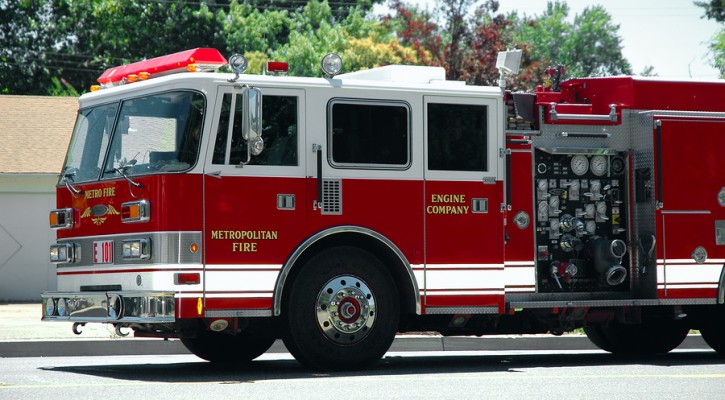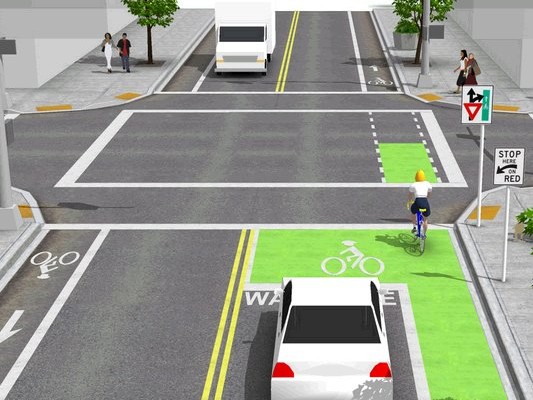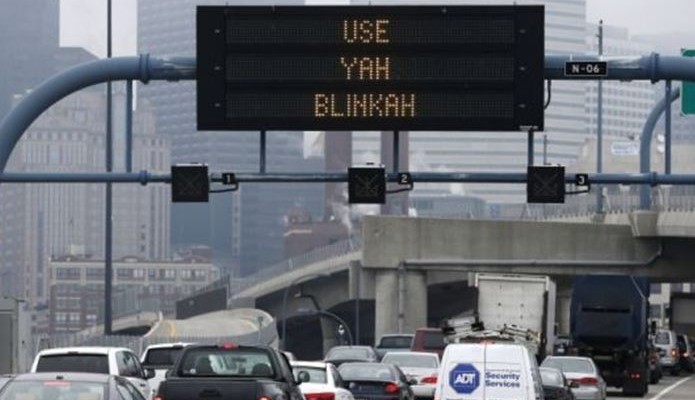Category Archive: Road Rules

How To Handle A Traffic Ticket In St. Pete Beach Florida
January 5, 2015
St. Pete Beach is a small town with only 2.2 square miles of land area and less than 10,000 permanent residents but, for a small town, it has some major traffic problems. With thousands of tourists flocking to St. Pete Beach every year and only one major road in and out, the town experiences traffic incidents out of proportion to its small size and population. Continue Reading

Decoy Used To Enforce Move Over Law
November 18, 2014
Police in Woodbridge New Jersey recently used a decoy fire truck to enforce that state’s Move Over Law. In spite of the fact that a large fire truck with its emergency lights flashing was posted on the road’s shoulder, many motorists paid no heed and refused to slow down or move to the far lane.
The first Move Over Law in the US was enacted in 1996 and, as of 2012, all 50 states have some form of Move Over Law that requires motorists to move over into the opposite lane or, if they can’t move over, to slow down when they encounter emergency vehicles on the side of the road. In spite of the law, according to estimates, law enforcement officers are killed by the side of the road at a rate of one per month and approximately five firefighters per year are killed. Surprisingly, tow truck operators are killed at an even greater rate.
New Jersey’s law was enacted in 2009 and requires that motorists who can’t move over into the opposite lane slow “to a reasonable and proper speed for the existing road and traffic conditions, which speed shall be less than the posted speed limit, and be prepared to stop.” The law not only includes police and fire vehicles but also tow trucks, highway maintenance, and service vehicles that are displaying emergency flashing lights.
This year, Florida amended its Move Over Law to include garbage/sanitation trucks and utility (gas, electric, water) vehicles in addition to police, fire, and tow trucks. Under Florida’s law, motorists who can’t move over are required to slow down at least 20 mph under the posted speed limit.
Enforcement or Entrapment?
In planning for the use of the fire truck decoy, Woodbridge police set up rules:
- A Move Over Law education program using billboards began on the routes in question several months before the start of the enforcement program.
- The fire truck was placed on on a straight section of road where a traffic light before the fire truck provided a natural break in traffic.
- Officers had to verify vehicle speed with a laser gun.
- Only vehicles that had a clear break in traffic to safely move over or slow down were monitored.
Fortunately, the majority of motorists that were monitored did slow down or move over. Unfortunately for some, the only way to get their attention is by issuing a traffic ticket. The first driver cited for failure to obey the law was traveling at 62 mph and made no effort to move over or slow down.
With the holidays approaching and the roads filled with travelers and shoppers, emergency personnel will be out on the roads in force. Protect the ones that protect you by obeying the Move Over law. Read more: Police use ‘decoy’ firetruck to educate drivers on Move Over law

Cyclists And New Road Markings
October 8, 2014
Cyclists use bikes as a way to stay in shape, save money or to help protect the environment. Whatever the reason, cycling is growing in popularity and there are more and more bicycles on the roads. Bike sharing is also growing in popularity and bike sharing programs are showing up on major university campuses and in most of the major cities in the US.
Unfortunately, with the increase in cyclists on the road the number of cyclists killed in traffic collisions is also on the rise. In 2012, 726 cyclists were killed and 49,000 were injured in motor vehicle traffic crashes. With both the popularity of cycling and the number of cycling fatalities on the rise, demands are becoming louder to protect cyclists on the road and traffic engineers are looking at new ways to do just that.
Here are a few road markings designed to make the road safer for cyclists that you may already be familiar with or that you may see in the near future.
Bicycle Lanes
The first and probably the most familiar type of lane markings are bicycle lanes. These lanes are set aside for cyclists and they are identified by the image of a cyclist. In some places, the lane may be painted green. No parking is allowed in these lanes. You may enter the lane in preparation for a right turn but only after checking to make sure the lane is clear of cyclists that may be coming up from behind.
Sharrows
Sharrows are lanes that are shared by both cyclists and motorists. Motorists need to be careful and understand that cyclists may move into the center of the lane to avoid obstacles or potholes and they may move to the left in preparation for a left turn. They are marked with the image of a bicycle with two chevrons on top.
Advanced Stop Line
The advanced stop line is painted just before the stop line and crosswalk. This area is also marked with the sharrow image. It allows cyclists to to make left turns or to proceed across an intersection in a safer manner. Motor vehicle traffic must stop at the stop line before the bicycle images.
Bike Boxes
Bike boxes are essentially the same thing as an advanced stop line. They will be painted green. Motorists must stop before the bike box.

Should The Punishment Fit The Traffic Offense?
August 11, 2014
Should the punishment fit the crime? Police in China have announced that, in addition to paying a fine, drivers who fail to dim their high beams when approaching oncoming traffic will have to stare into high beams for five minutes.
The author of this article has come up with some novel punishments to fit the traffic crime. Caught applying makeup in traffic: no makeup for a week. How do you feel?
Read more: Punishments for driving offenses should fit the crimes

